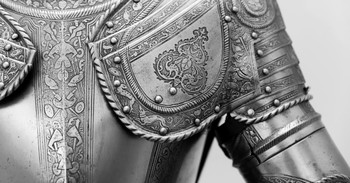
The ground seemed to heave under the feet of Reverend John Megapolensis. After seven weeks at sea, he, his wife and children had to adjust to solid earth again. This land was strange to them. When thirty-nine-year-old John and his family arrived in New Amsterdam (it is now called New York) on this day, August 4, 1642, they saw a primitive settlement--a far cry from today's New York.
As thinly settled as New Amsterdam was, the family immediately ventured into the wilds where there were even fewer homes and people. John was to become the first pastor of a new town at Fort Orange (near Albany). About a hundred people lived at this new settlement in twenty five or thirty houses. Not even all of these families were Dutch: Scandinavians, English and Germans had settled the region, too, not to mention African slaves and local Indians.
John's contract promised him a home, 1,000 guilders a year, and thirty schepels of wheat (about 23 bushels) and two firkins of butter (about half a bushel). He was forbidden to engage in farming or in trade, but was required instead to spend his time in "the diligent performance of his duties," which included teaching the Indians about Christ. This was a real hardship, because his salary wasn't always paid. Under his contract, he was obliged to stay three years and the landowner had the option to renew that for a further three years if he chose.
No church had been built before John and his family arrived. For almost five years, he had to hold most services in his own home. What a burden that must have imposed on Mrs. Megapolensis! In 1647, his congregation remodeled a storehouse to serve as a church. Since John was a faithful, hardworking pastor, the landowner kept him the full six years. By then, John was happily contemplating a return to his homeland in Europe. He sent his wife and children on ahead of him.
When John reached New Amsterdam, the colonial officers, led by Governor Peter Stuyvesant, pleaded with him to stay. All of the work he had done would go to ruin, they said. There was no one else to take it over. Worse yet, Reverend Backerus had just returned to Holland, leaving no Reformed Church Pastor in the whole colony. Who would baptize the children?
John wrestled with his conscience. In the end, Stuyvesant was able to gratefully report to Holland that John agreed to stay in New Amsterdam. He had "set the honor of God, the service of the church, and the saving of human souls, above his own very important business..." What it meant for him to stay, away from the libraries and facilities of Holland can be imagined. He was a well-educated man who loved the books that were so rare in the New World. He had a small library of his own and tutored his own son in Latin. John wrote a study of the Mohawk Indians which was published in Holland.
Stuyvesant's description of the congregation that John was about to inherit was not flattering. He called them feeble, lukewarm and fainthearted. Perhaps that is why the rival Lutheran Church began to grow rapidly--people were looking for a more vigorous faith. The Lutherans gained so many followers that Governor Peter Stuyvesant was alarmed. Like most leaders of that time, he thought a state-run church was needed if there was to be unity. He brought over an English-speaking Reform minister for the English and passed stiff laws against religious freedom. Regrettably, John sided with those who harassed the Lutherans and another emerging religious group--the Quakers. He died in New Amsterdam in 1670.
Bibliography:
- Early History of the Collegiate Church commissioned in 1939 by the WPA, an. http://www.collegiatechurch.org/history.html
- "Megapolensis, Johannes." Virtual American Biographies. http://www.famousamericans.net/johannesmegapolensis/
- Various encyclopedia and internet articles; brief mentions in histories of New Amsterdam or New York; and biographies of Isaac Jogues.
Last update June, 2007


